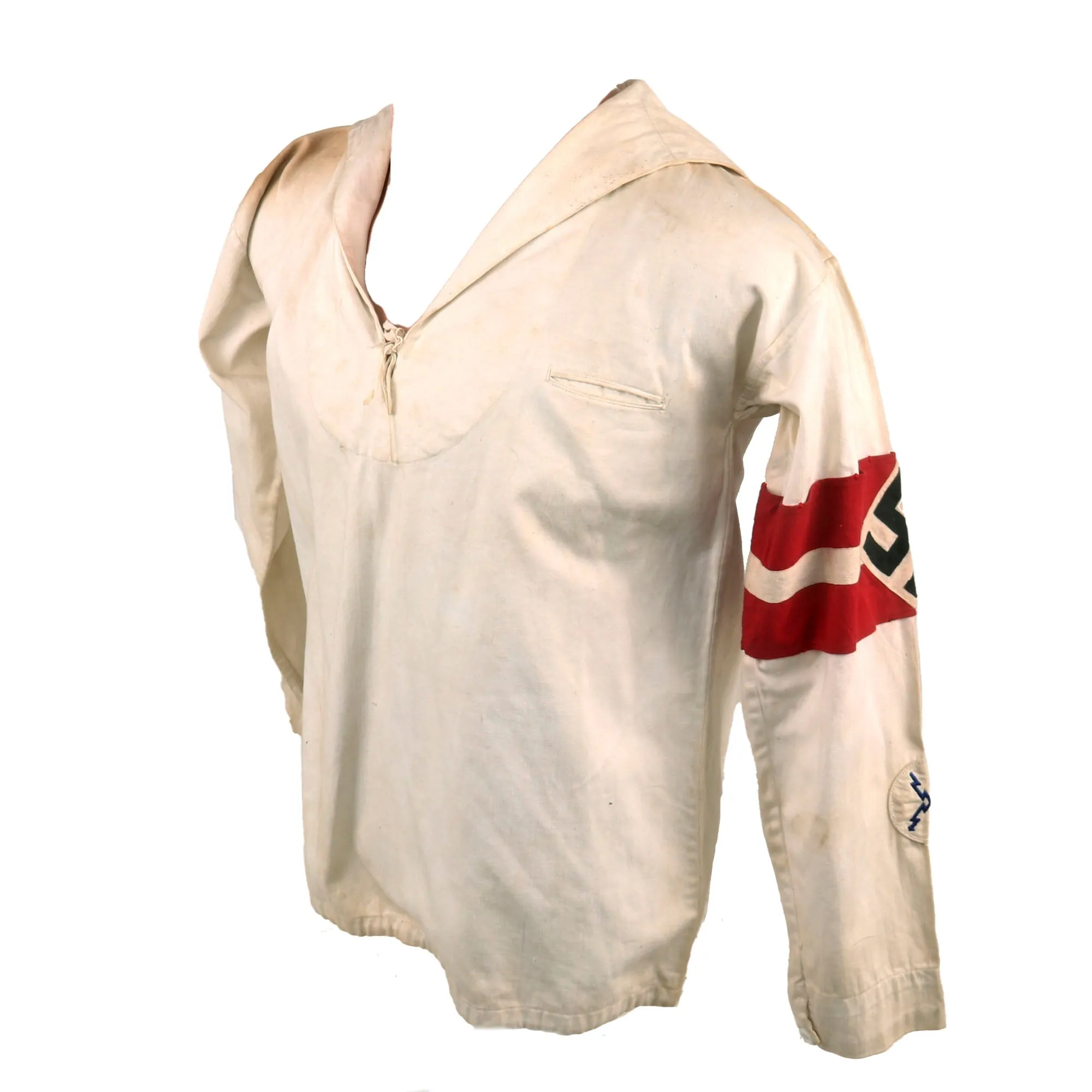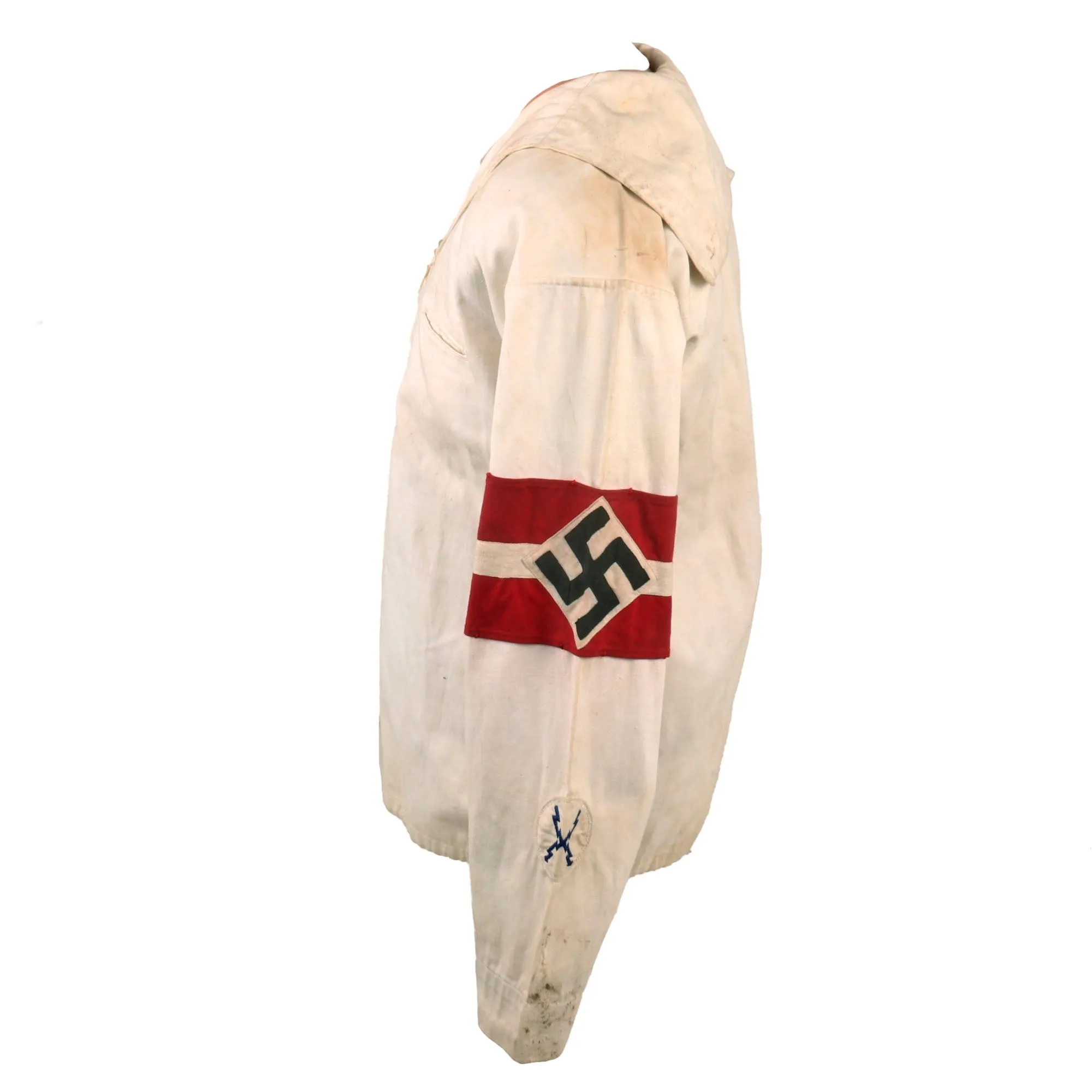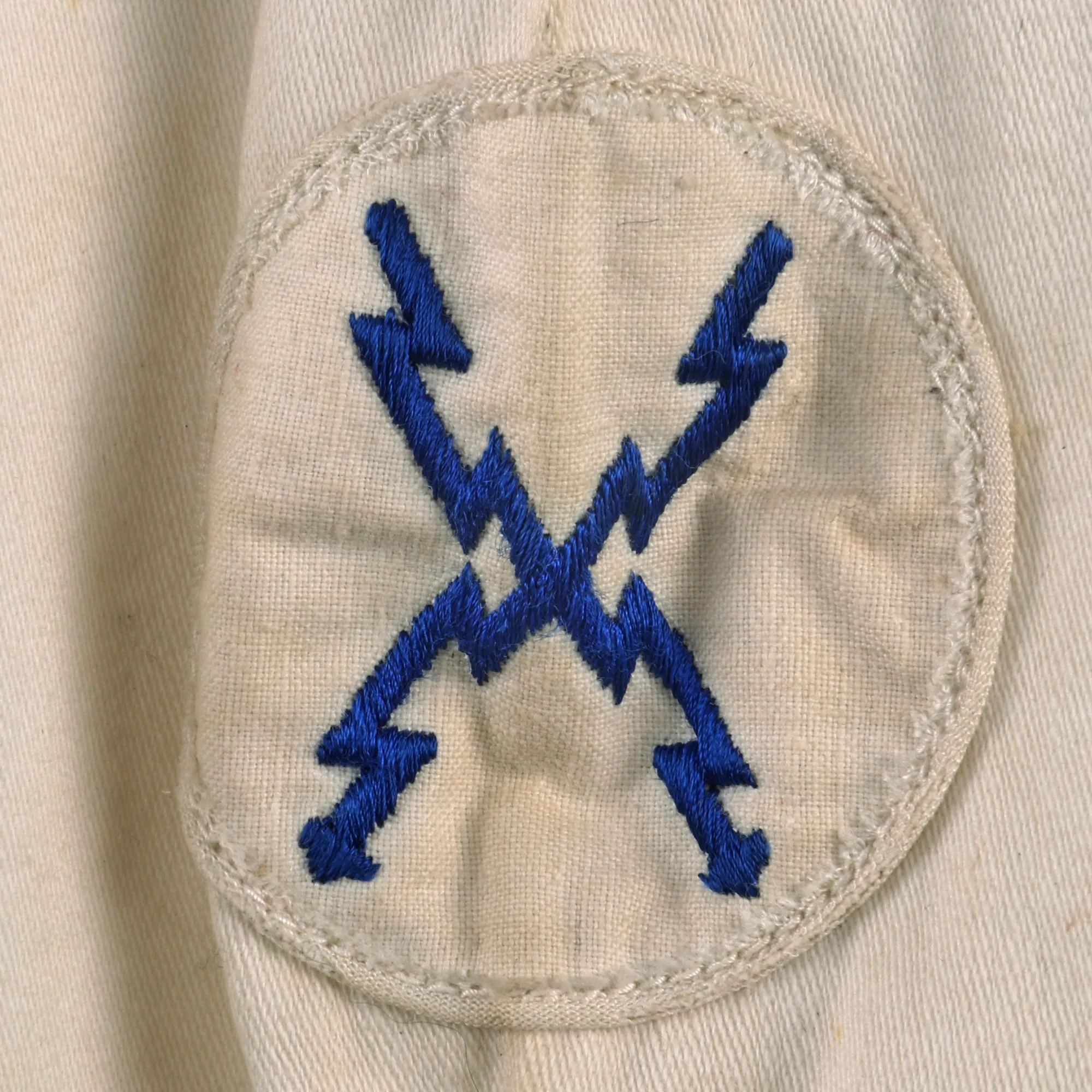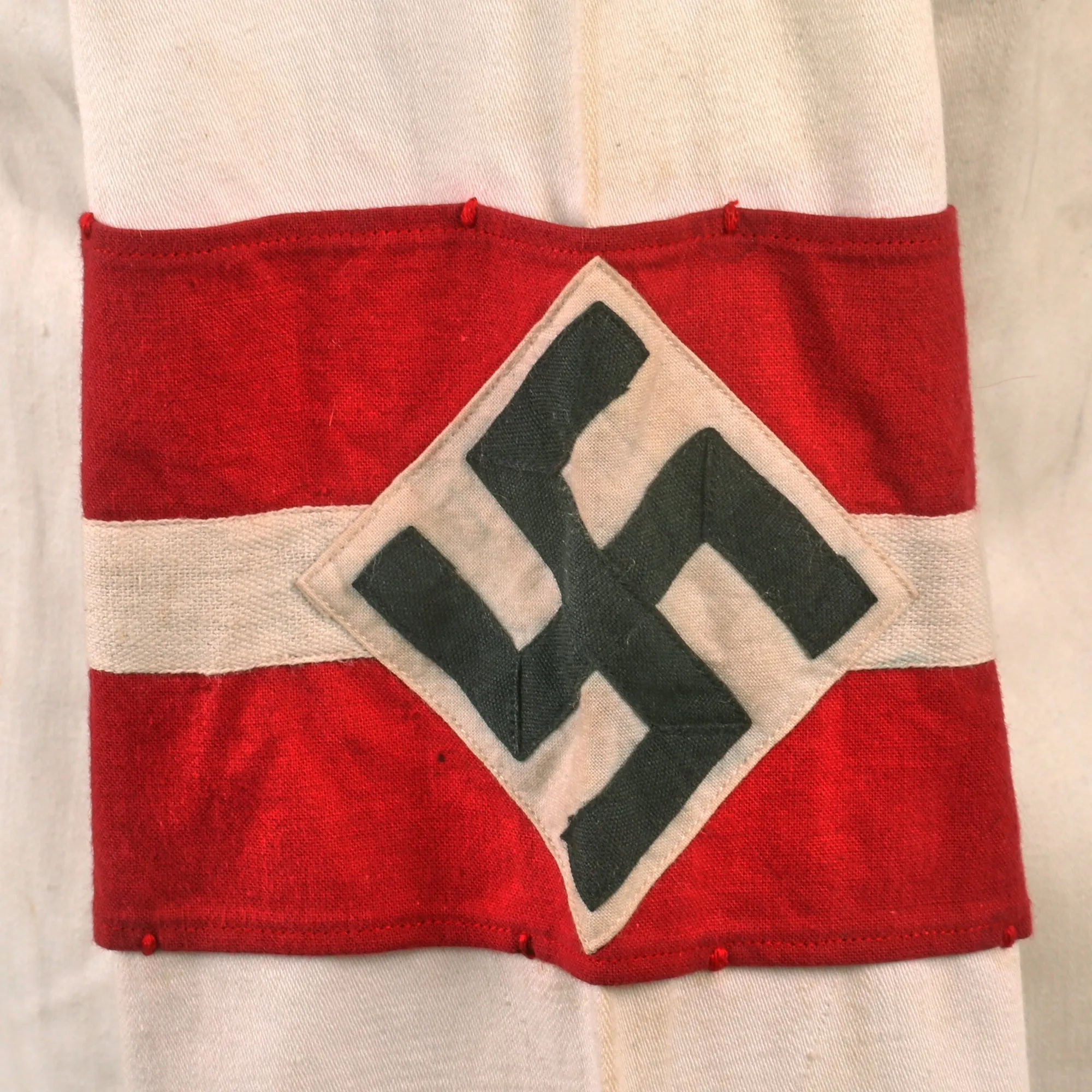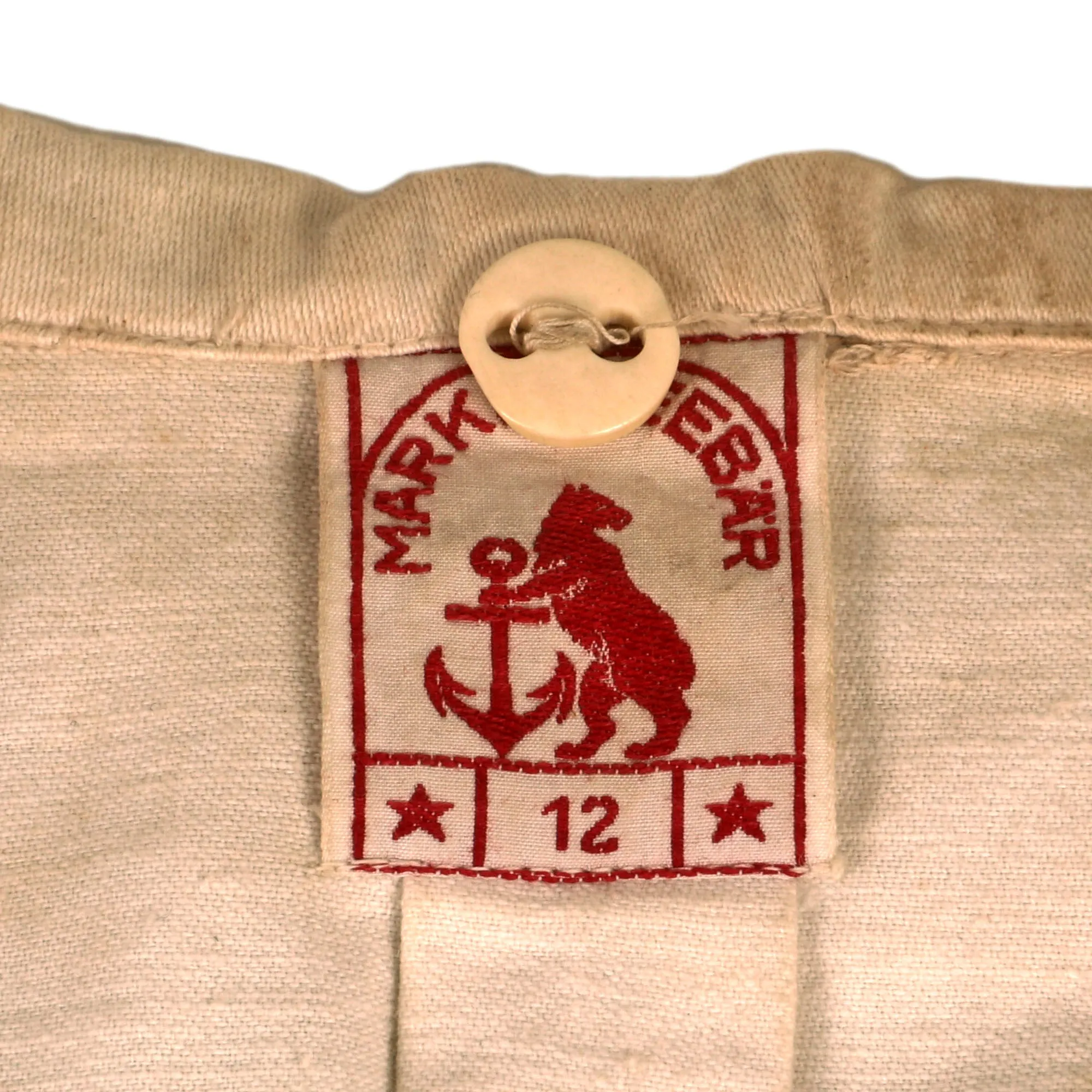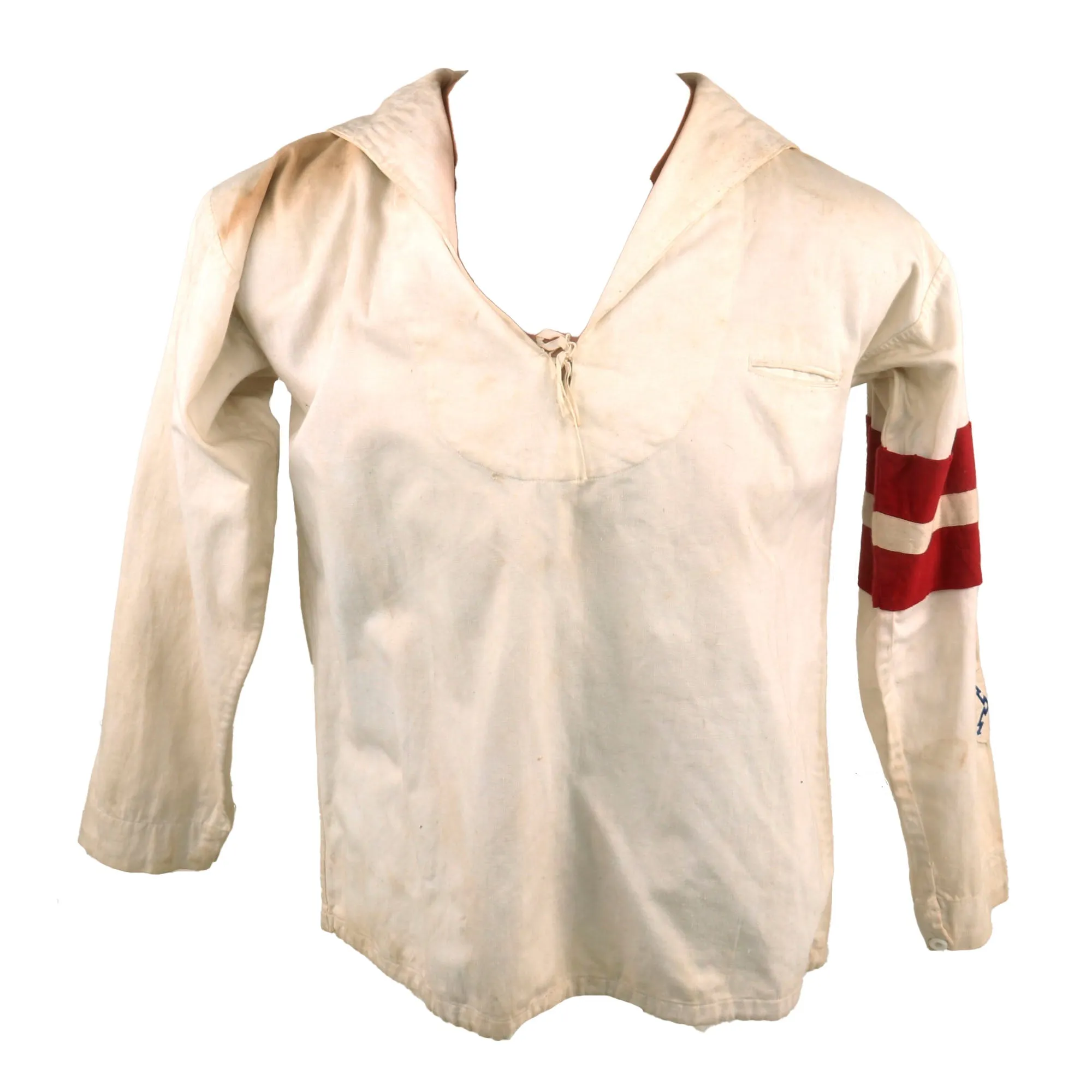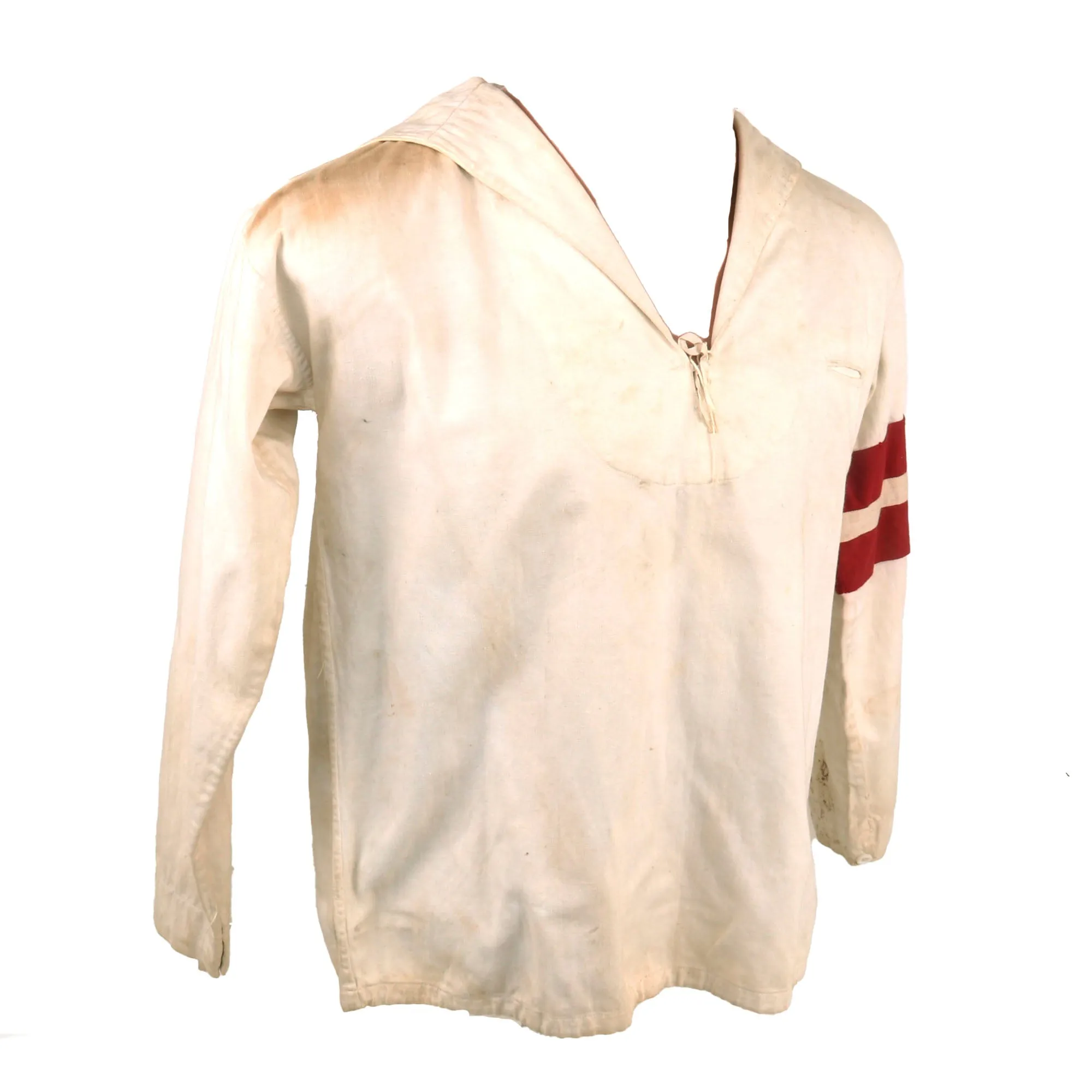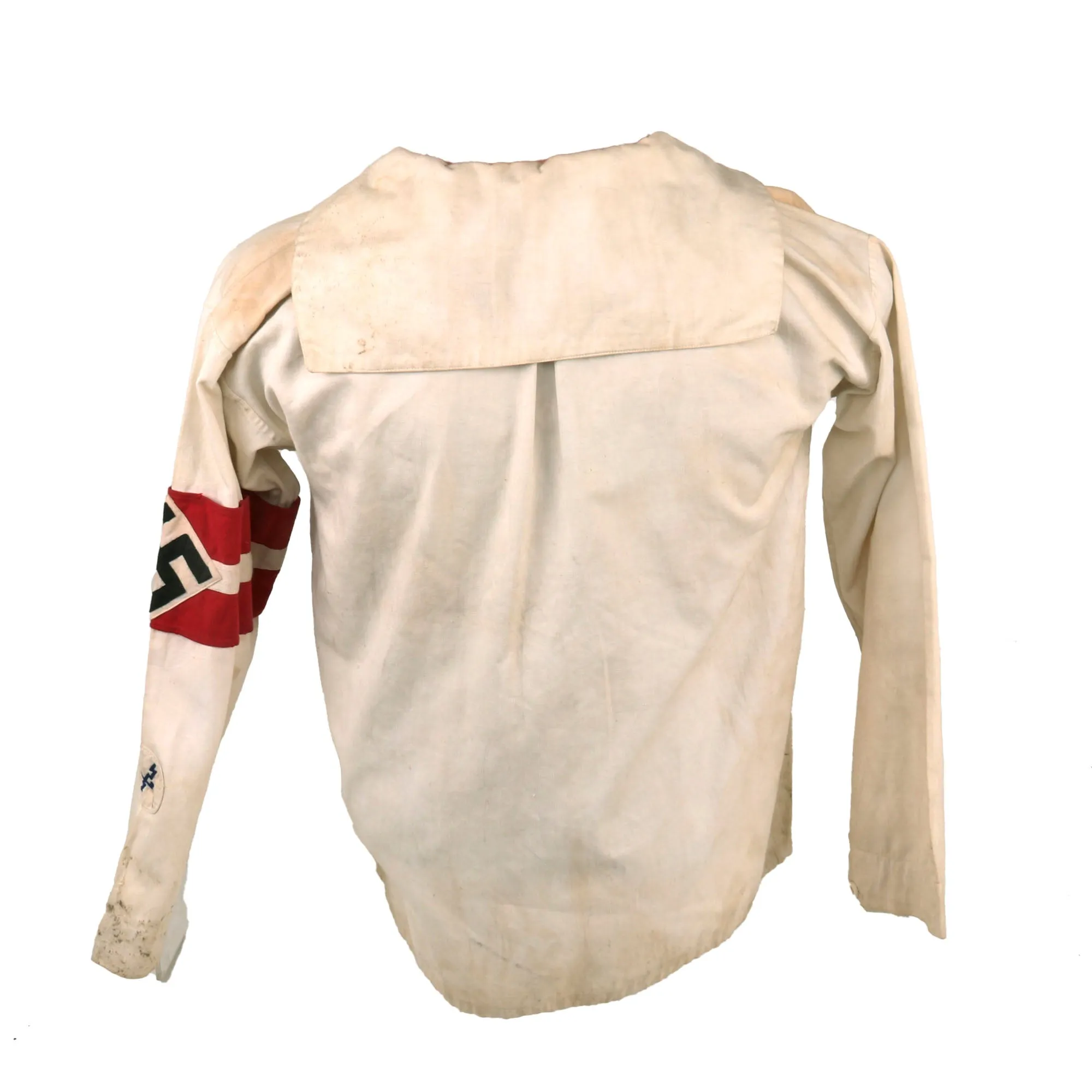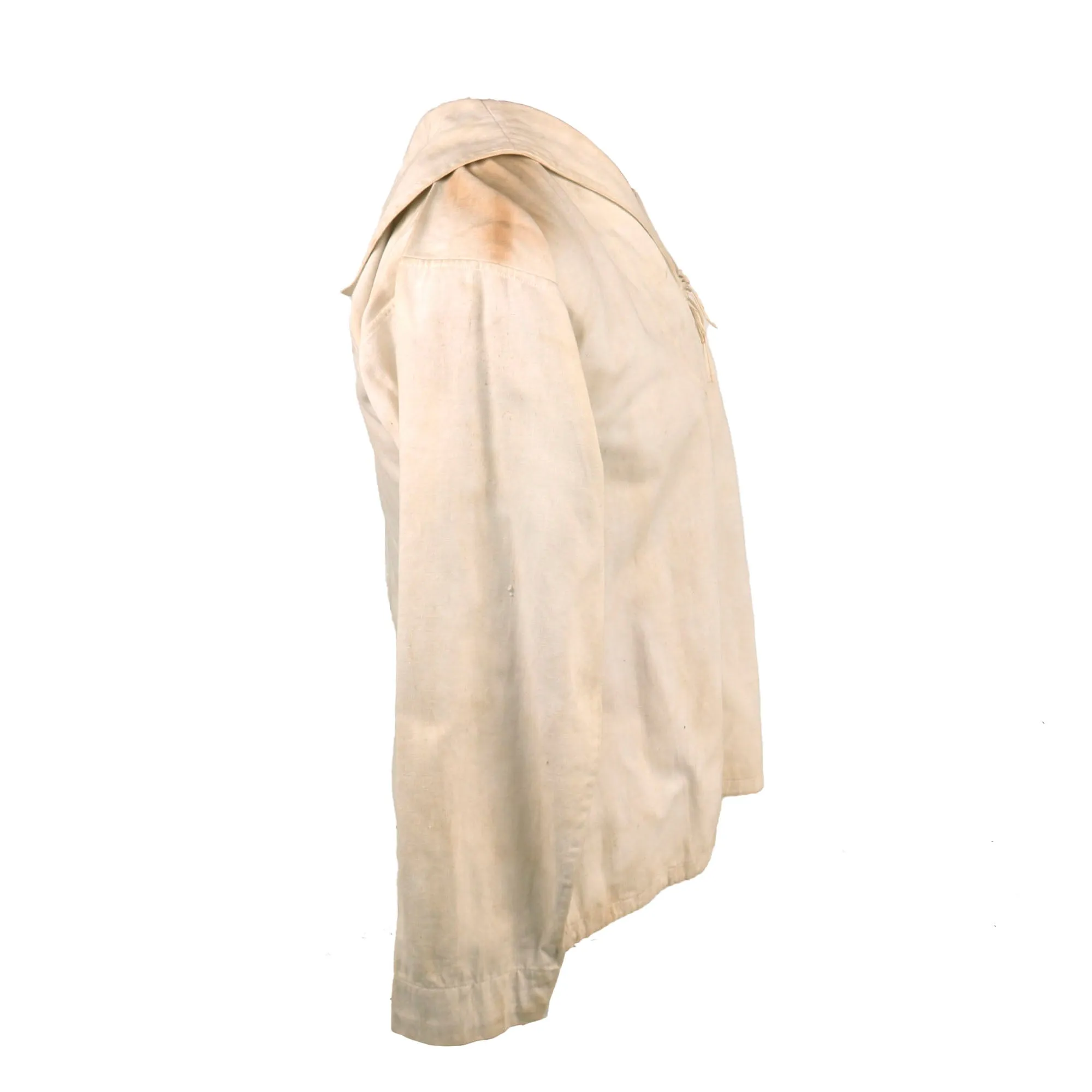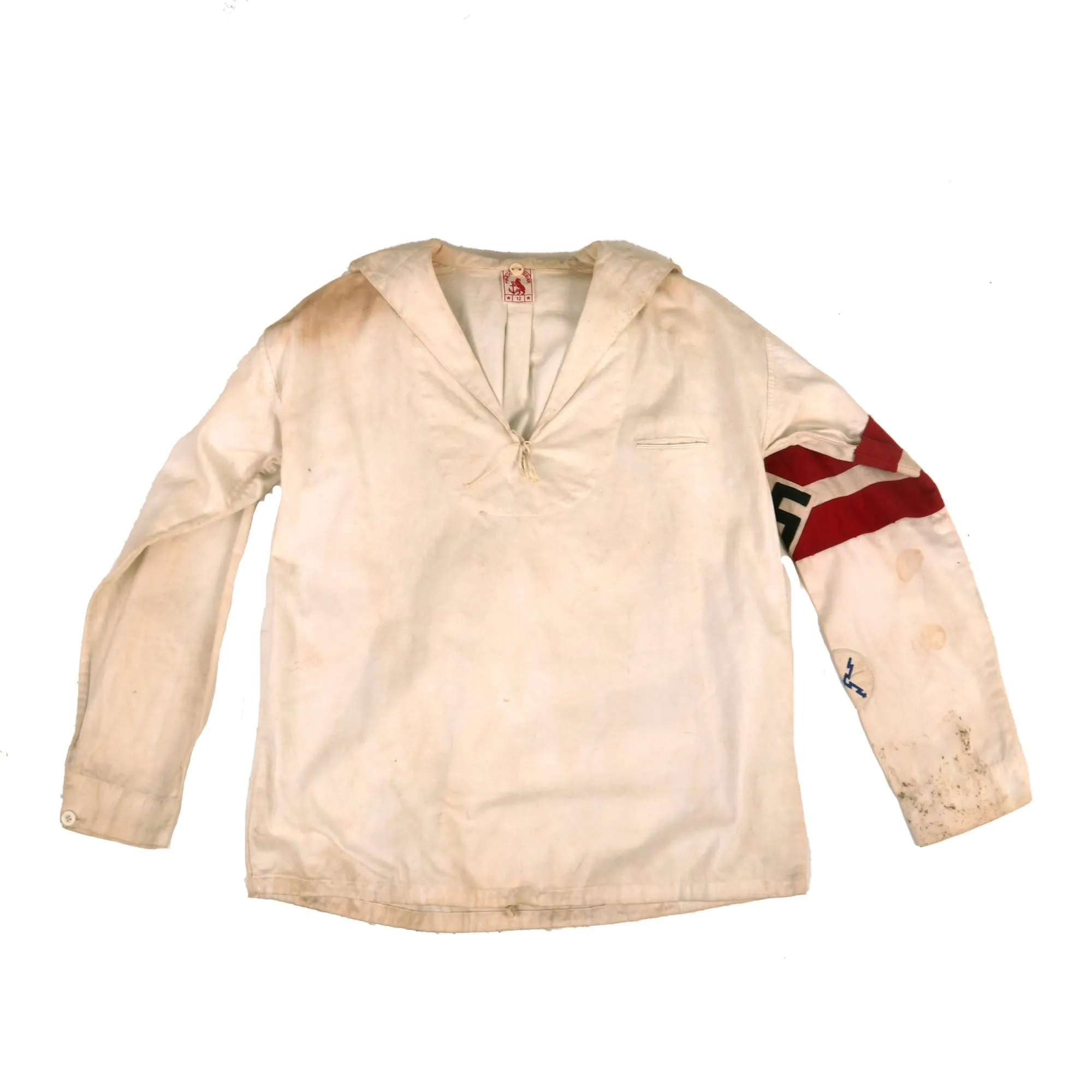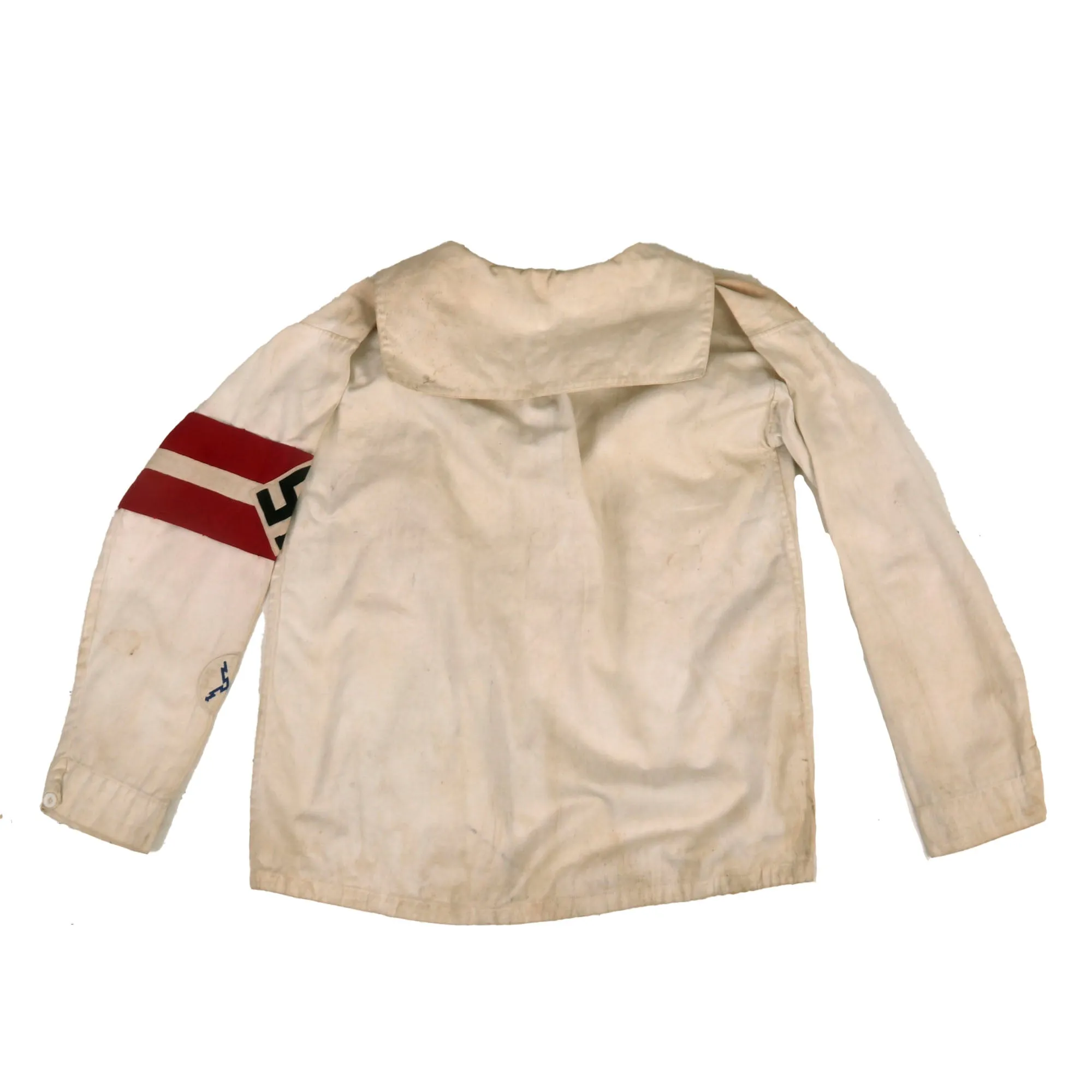Original Item: Only One Available. This is a gorgeous example of a white classic Navy style pull-over black wool tunic worn by a Marine HJ Youth member, complete with his specialist patch & HJ armband. This example is in the normal jumper style and does not have fastening buttons, meant to be pulled-over. This example has a maker’s tag under the collar for MARKE SEEBÄR, with a size marking underneath, 12.
The jumper retains its original HJ armband, which is sewn onto the left sleeve in seven spots on the top and bottom, a very interesting affixation pattern. The armband is in great shape without much fraying or damage. Below this armband is a small patch with two arrows in an electrical style, the qualification badge for Fernschreib, or Teletype Operator.
There is some staining on the jumper but all buttons are retained. A great example, ready for further research and display.
Approximate Measurements:-
Collar to shoulder: 10.5"
Shoulder to sleeve: 20.5”
Shoulder to shoulder: 19”
Chest width: 19”
Waist width: 19"
Hip width: 19”
Front length: 24.5"
In 1922, the Munich-based NSDAP established its official youth organization called Jugendbund der NSDAP. It was announced on 8 March 1922 in the Völkischer Beobachter, and its inaugural meeting took place on 13 May the same year. Another youth group was established in 1922 as the Jungsturm Adolf “AH”. Based in Munich, Bavaria, it served to train and recruit future members of the Sturmabteilung (SA), the main paramilitary wing of the NSDAP Party at that time.
One reason the HJ so easily developed was that regimented organizations, often focused on politics, for young people and particularly adolescent boys were a familiar concept to German society in the Weimar Republic. Numerous youth movements existed across Germany prior to and especially after World War I. They were created for various purposes. Some were religious and others were ideological, but the more prominent ones were formed for political reasons, like the Young Conservatives and the Young Protestants. Once AH came onto the revolutionary scene, the transition from seemingly innocuous youth movements to political entities focused on AH was swift.
Following the abortive Beer Hall Putsch (in November 1923), NSDAP youth groups ostensibly disbanded, but many elements simply went underground, operating clandestinely in small units under assumed names. In April 1924, the Jugendbund der NSDAP was renamed Grossdeutsche Jugendbewegung (Greater German Youth Movement). On 4 July 1926, the Grossdeutsche Jugendbewegung was officially renamed HJ Bund der deutschen Arbeiterjugend (HJ League of German Worker Youth). This event took place a year after the NSDAP Party was reorganised. The architect of the re-organization was Kurt Gruber, a law student from Plauen in Saxony.
After a short power struggle with a rival organization—Gerhard Roßbach's Schilljugend—Gruber prevailed and his "Greater German Youth Movement" became the NSDAP Party's official youth organisation. In July 1926, it was renamed H -Jugend, Bund deutscher Arbeiterjugend ("H” Youth, League of German Worker Youth") and, for the first time, it officially became an integral part of the SA. The name H -Jugend was taken up on the suggestion of Hans Severus Ziegler. By 1930, the Hjugend (HJ) had enlisted over 25,000 boys aged 14 and upward. They also set up a junior branch, the Deutsches Jungvolk (DJ), for boys aged 10 to 14. Girls from 10 to 18 were given their own parallel organization, the League of German Girls (BDM).
In April 1932, Chancellor Heinrich Brüning banned the H Youth movement in an attempt to stop widespread political violence. However, in June, Brüning's successor as Chancellor, Franz von Papen, lifted the ban as a way of appeasing “AH”, the rapidly ascending political star. A further significant expansion drive started in 1933, after Baldur von Schirach was appointed by H as the first Reichsjugendführer (Reich Youth Leader). All youth organizations were brought under Schirach's control.




